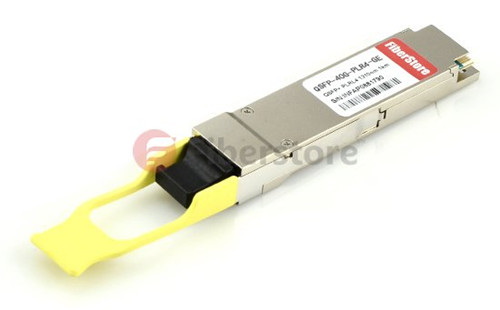Times are always moving forward, just as data center regularly goes through great migration from 1G, 10G to 40G, 100G over the past few decades. Since IEEE 802.3ba standard defined the 40G Ethernet on June 17, 2010, people designed several types of 40G optical transceivers to achieve 40G network, of which QSFP is the most common type available in the market. There are many different variants, like QSFP-40G-LR4, QSFP-40G-PLR4. So what is the difference between them? The following passage will provide a satisfying answer for you.

QSFP-40G-PLR4
As the word implies, one obvious difference between QSFP-40G-LR4 and QSFP-40G-PLR4 is that QSFP-40G-PLR4 has a plus letter “P” in it. In fact, it means parallel. As we all know, in digital data transmission, data transmission usually occurs in two modes—serial and parallel. Parallel transmission is the simultaneous transmission of multiple bits over two or more separate paths, which allow for higher data transfer rates than can be achieved with serial transmission. While serial transmission is the sequential transmission of bits over a single wire frequency or optical path. It reduces the wire cost but slows the transmission speed at the same time. Thus QSFP-40G-LR4 uses the LC connector to achieve serial transmission. While QSFP-40G-PLR4 transceiver terminates with the MPO/MTP connectors to reach parallel transmission. Expect for different optical connectors, they are distinguished by the following features.
Wavelength
- QSFP-40G-LR4 (Multiplexing and demultiplexing of the four wavelengths are managed within the device): 1271 nm, 1291 nm, 1311 nm, 1331 nm
- QSFP-40G-PLR4: 4×1310nm
Transmission Distance
- QSFP-40G-LR4 and QSFP-40G-PLR4 both support link lengths of up to 10km.
Interoperability
- For QSFP-40G-LR4, the 40 Gigabit Ethernet signal is carried over four wavelengths. Multiplexing and demultiplexing of the four wavelengths are managed within the device, which interoperates with SFP+ CWDM.
- For QSFP-40G-PLR4, it interoperates with 10GBASE-LR (10km) and 10G-LRL (1km) with 4×10G splitter option.
Cable Type
- 40GBASE-LR4 supports up to 10km on 9um SM fiber (same fiber used for 10G single mode 10GBASE-LR).
- QSFP-40G-PLR4 can support 4 individual 10G-LR connections using a 4×10G mode and fiber breakout cables or cassettes for single mode fiber.
To sum up, QSFP-40G-LR4 and QSFP-40G-PLR4 are distinguished with each other in the following features. QSFP-40G-LR4 uses LC connectors, yet QSFP-40G-PLR4 uses MPO/MTP connectors. And they possess different wavelengths and use different cable types. What’s more, QSFP-40G-LR4 interoperates with SFP+ LR, while QSFP-40G-PLR4 interoperates with SFP+ CWDM.
Fiberstore, a leading and professional company in the communication industry, offers a wide variety of high-density and low-power 40G Ethernet optical transceivers. Fiberstore's QSFP-40G-LR4 is compliant with Cisco QSFP-40G-LR4, it can apply in all Cisco products. QSFP-40G-PLR4, made in Fiberstore, is compliant with Arista QSFP-40G-PLR4. They are very popular in our company for its large stocks, competitive price and high quality. We can also customize optical products to meet your own requirements.
Originally published at http://www.fiber-optic-solutions.com
评论
发表评论